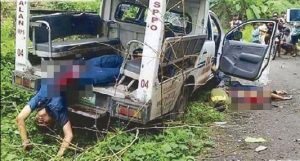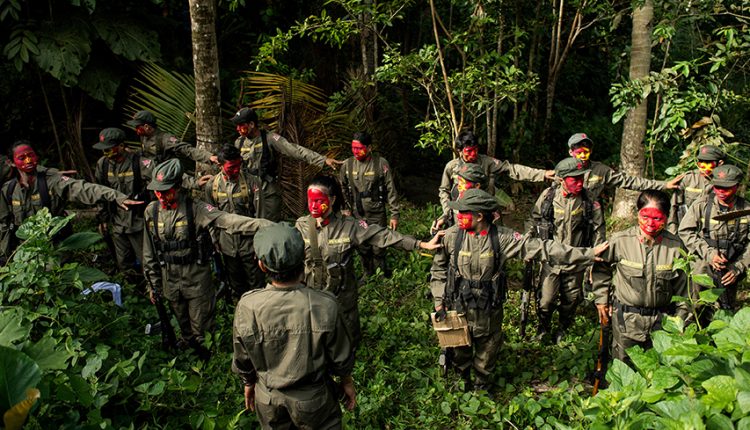The “undemocratic” program of the CPP, “destruction” of the AFP and “nationalization” of the economy
Special Report on the Second Congress of the CPP (Part 6)/Pinoy Exposé Team
Editor’s Note:
IN our 5TH series last week, we discussed why in the absence of foreign support, the CPP’s armed struggle is doomed to failure. This is due to the party’s erroneous belief that pure guerilla warfare would be enough to bring down our establishment government and defeat a modern military like the Armed Forces of the Philippines.
In the present series, we discuss why other than a doomed armed struggle, the CPP cannot likewise hope to unite as many social forces as possible under its “national united front” campaign. This is because in essence, there is nothing democratic in its General Program. And who would want to join a campaign for a better government or a better Philippines under an alliance anchored on the dictatorship, control and direction of one group, the CPP?
As previously stated, this series is based on CPP documents, its amended Constitution and revised ‘Program’ that were among those recovered by government forces in Baguio City last March 13, 2020, from Julius ‘Ka Nars’ Giron.
Giron and two of his companions were killed after they allegedly resisted the serving of an arrest warrant against him.
Giron was the elected CPP chairman during the Second Congress of the CPP held from October 24 to November 7, 2016, in the hinterlands of Surigao del Sur.
WITH the administration of Pres. Ferdinand Marcos kept busy addressing one major crisis after another, the belief arose by the middle ‘80s that his government is “ripe” for an overthrow by the combined alliance of the local opposition groups and those under the CPP umbrella, its legal fronts under the National Democratic Front of the Philippines (NDFP).
But when Pres. Marcos did fall on February 25,1986, the CPP could not credit itself for the event because months before, it had adopted the policy of “boycotting” the “snap election” that Marcos agreed with a faction of the US government to be held on February 7, 1986.
Using the American media to effect a “regime change” in the Philippines, the government of Marcos had been the subject of incessant negative reports in the United States since the early ‘80s, even before the murder of Sen. Benigno ‘Ninoy’ Aquino Jr. by the Cojuangco clan in 1983.
And in an interview with David Brinkley on November 5, 1985 over “ABC” (American Broadcasting Company), Marcos was tricked into calling for a “snap election” the following year, an announcement that surprised many, the CPP included.
We now know that Marcos’ announcement triggered a heated debate within the CPP, with one faction calling for “critical participation” in alliance with the political opposition and the “hardliners” showing their lack of political sophistication and ideological rigidity, insisting on a boycott of the election.
Significantly, those calling for critical participation were those in the leadership of the NDFP, who have regular interaction with opposition figures while those for boycott are those entrenched in the top party leadership. Eventually, the hardliners won.
As we also know now, the boycott stand boomeranged on the CPP as it found itself guilty of “tailism,” a Marxist-Leninist-Maoism terminology for the party as being at the “tail-end” of the mass movement.
And had it not been for the initial accommodation shown by a grateful Corazon Aquino as president and those in the political opposition, who agreed to pardon and release CPP founder Jose Maria Sison and other communist leaders, the CPP would not have gained anything after the so-called ‘People Power Revolution.’
Katlhleen Weekley, author of ‘The Communist Party of the Philippines, A Story of Its Theory and Practice, 1968 -1993’ (published by the UP Press, 2001), elaborated on this fundamental error made by the CPP before, during and after the 1986 snap election.
And from her interviews, it was clear that the CPP erred big time because of the non-democratic character of its united front program—views expressed by non-communist allies and even by communists in the top echelons of the NDFP but contrary to those of the CPP leadership are simply ignored.
And ever afraid of losing its grip on preeminence and leadership in its campaign for a “new Philippines,” the Surigao Congress in 2016 made it clear, even in its “revised” ‘10-Point Program,’ that everyone joining any organization of the NDFP must accept the domineering role of the CPP.
As the Program put it under, Article 2, “The people’s democratic state shall be under the leadership of the working class, founded on the basic alliance of the working class and peasantry…
“… The (CPP) as the ruling party, in representation of the working class, shall form the government as a coalition or united front of all democratic classes.”
As for the purpose of the NDFP, Section 2 also made it clear that it is nothing but “the united front for armed struggle.”
That the present system of government would also result into its destruction to be replaced by the dictatorship of the party, is also made clear under Section 4.
Instead of “check and balance” thru the existence of the Executive, Legislative and Judicial branches of government, the CPP intends to replace this with “democratic centralism.”
In CPP language, “democratic centralism” means, the subordination of all units to the decision of the CPP Central Committee and within the Central Committee, to the will of the faction in power. Ultimately, the so-called “dictatorship of the proletariat” is nothing but the dictatorship of the CPP First Secretary (under the Soviet system) or the Chairman (under the Maoist system).

Under Section 5, the CPP also made it clear on how it would treat the Armed Forces of the Philippines (AFP) and the role of its armed wing, the New People’s Army:
“The most pressing task of the (NPA) is to defeat and destroy the US-created and US-supported reactionary Armed Forces of the Philippines and all other kinds of armed power in the hands of the exploiting classes and the reactionary state at all levels.”
Expounded, this too, means the “destruction” of the Philippine National Police and other government-recognized militias that protect their local communities.
But if such programs are not enough to cause alarm among Filipinos to resist communist aggression with all their might, Section 7, calling for “national industrialization” is sure to invite potential economic collapse if not, direct foreign armed intervention.
For as Section 7 warned us, “Upon the basic completion of the national democratic revolution through the seizure of political power, socialist revolution and construction shall commence.”
Translated, this means the “nationalization” of all “strategic enterprises” owned by foreigners, particularly American and Japanese businesses, along with the confiscation of private lands for the CPP to implement its own version of “land reform.”
And not only these businesses. Section 7 also stipulated that “all major financial intitutions, major sources of raw materials and energy, all heavy and basic industries, major lines of domestic and foreign trade and all national enterprises shall be run by the state sector (read: the CPP).” — end of part 6.



